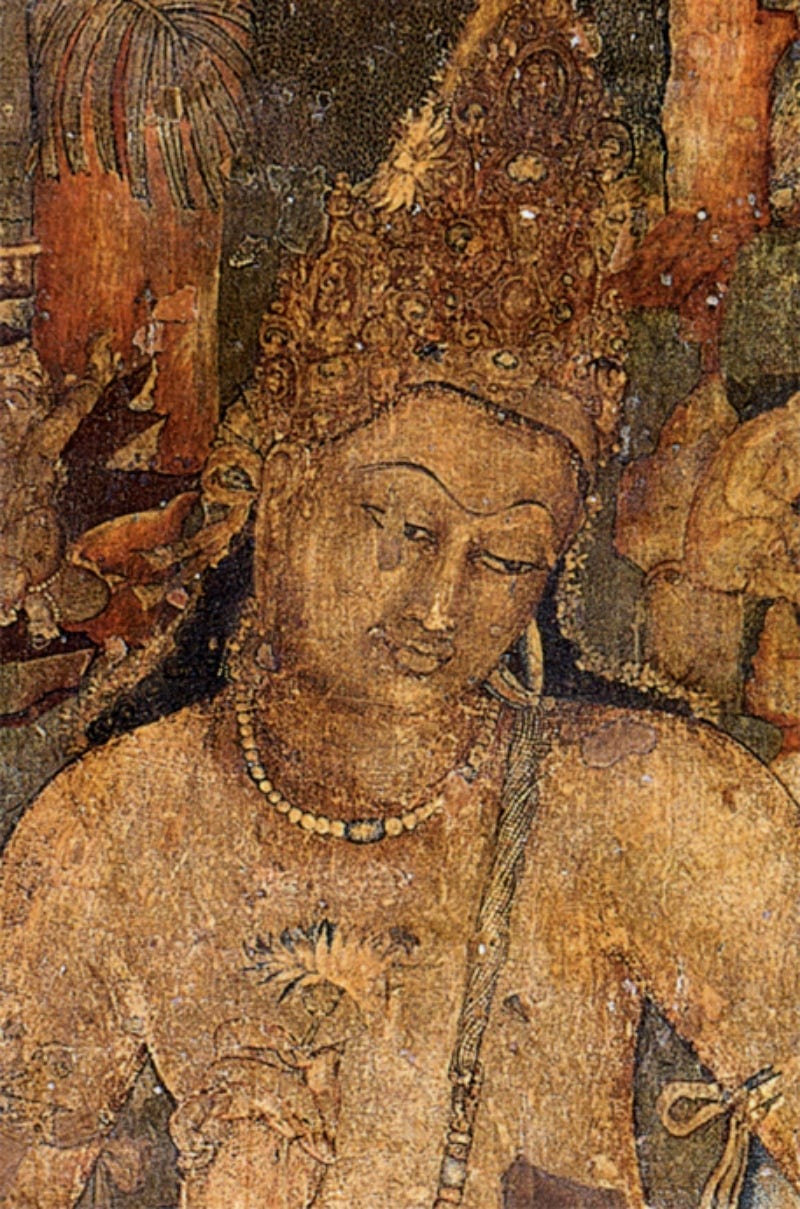👈 || UNSAYING | CONTEMPLATION | TRADITION | MEDITATION | DISCUSSIONS | BACK MATTER || 👉
There are techniques of meditation that rely upon the only continuous phenomenon that is always ready-at-hand — that of inner spontaneous sounds. The Surangama Sutra, found in Mahāyāna Buddhism, is a training manual for how to understand, and use, these sounds.
The desired endpoint of a consistent meditation practice, regardless of the technique involved, is enlightenment in a total sense.
The question of whether or not enlightenment is a single, final, event, or if it is a gradual accumulation of illuminations over the course of an ascension along one’s meditative path, is debated by some; but my progress along my meditative path has convinced me that it is illuminations all along the way, until suddenly, spontaneously, enlightenment is revealed.
However, a consistent meditation practice has side-effects along with its desired endpoint. We know this today because of the popularity of secularized mindfulness meditation practices, which take a subset of the expected side-effects of meditation to be the desired endpoint. For example, mindfulness meditation is touted to reduce the effects of stress by alleviating its occurrence in our modern stress-inducing daily way of life.
The problem with all but one method of meditation is that the effects are discontinuous, and short-lived, because the side-effects come from the practice, which must be continued in order that one can benefit from the side-effects. Illuminations and full enlightenment are changes in our understanding that hold, even though we may no longer meditate. That is, once you’ve seen it, you can’t get it out of your mind.
This discontinuity of the effects is a problem when one is faced with a strongly emotional, or traumatic, event in one’s life. Most people find it hard to calm their mind under easy circumstances, so one should not expect to be able to calmly meditate while facing extreme events.
However, there are techniques of meditation that rely upon the only continuous phenomenon that is always ready-at-hand — that of inner spontaneous sounds. These sounds are continuous over the course of one’s life, and are useful in the initial development of concentration, as well as in support of one’s efforts to directly experience the nature of mind, by giving us a target for our attentional focus that is within the mind itself.
Because the inner spontaneous sounds are continuous and ready-at-hand at all times — and in fact, become more present in times of great stress and trauma — they provide something solid to hold onto in these particularly damaging times. This is their super power, in Marvel terms.
The Surangama Sutra, found in Mahāyāna Buddhism, is a training manual for how to understand, and use, these sounds in a particular technique — that of Avalokitasvara, the avatar of “great responsiveness,” which means compassion that is without any self-centered concerns. As such it is an invaluable document that can help us be invincible to the damaging current events of our time today — and the sutra says that this is so.
This is why this practice will be of use for all people, including current meditation practitioners.
However, although the Surangama Sutra has been one of the most studied sutras in Chinese Buddhism, and to a lesser extent in Zen Buddhism, for over a millennia, in Tibetan Buddhism it has been dismissed as a forgery by scholars during that same millennia. My work — my mission — has been to share my lifelong practice of meditation because of the results that I have seen over my 60 years of using it. My discovery of the Surangama Sutra and its depiction of Avalokitasvara’s practice, which aligns closely to that which I was introduced to at a very young age, has given me an added impetus to bring this knowledge to the awareness of all people.
In addition, there is a prophetic teaching of Buddha that was found in the papers of Jamyang Khyentse Chökyi Lodrö, known as the “master of masters” in all schools of Tibetan Buddhism, in which the Buddha points to a teaching for the meditation practice that people in this time should be using, which he calls “Great Responsiveness Meditation” in the prophetic text, while also calling Avalokitasvara “the Greatly Responsive One” to make it clear whose practice he means. It is my assertion that this is the practice of Avalokitasvara given in the Surangama Sutra, where it is not given a particular name. The fact that I had given my own meditation practice the name “Great Responsiveness Meditation” years before discovering the Surangama Sutra — in light of the prophetic teaching about this practice — cemented my intention to publicize it.
And the same scholars today who denigrate the Surangama Sutra also denigrate this prophetic text — and some even go to the extreme of interceding to close down any public discussion of either the sutra, or the prophecy on social media. While our normal fixation today is on Science and what scientists say, in the case of these “text-critical scholars” who go so far as to shutdown open discussion, one must dismiss them because they are not scientists — they are merely divisive partisans of a particular view that is not based upon firm historical or scientific evidence, which is why they cannot countenance any discussion of what the Surangama Sutra shares. Their calumny towards it knows no bounds, as I will show shortly.
ཨེ་མ་ཧོ། ཕན་ནོ་ཕན་ནོ་སྭཱཧཱ།
👈 || UNSAYING | CONTEMPLATION | TRADITION | MEDITATION | DISCUSSIONS | BACK MATTER || 👉






